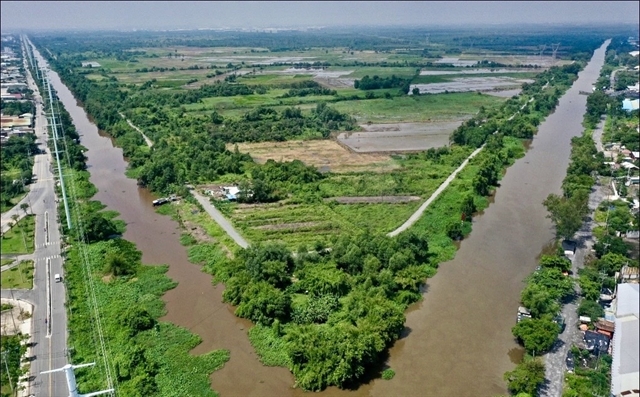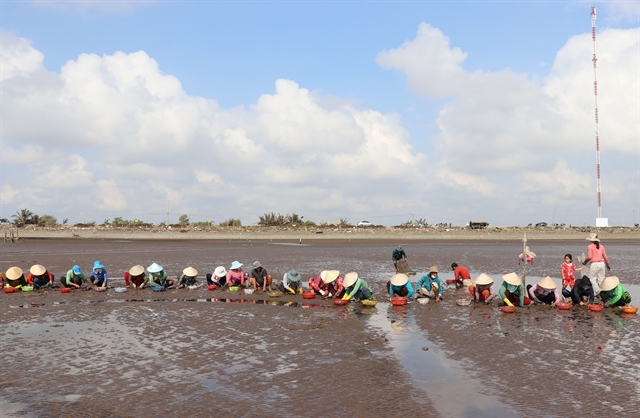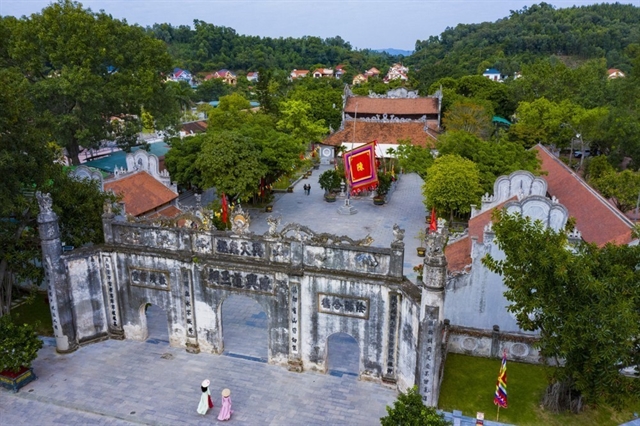 Society
Society

 |
| Farmers harvest clams in Tiền Giang Province’s Gò Công Đông District. – VNA/VNS Photo Hữu Chí |
TIỀN GIANG – Clam farmers in Tiền Giang Province are getting high prices, which have taken their revenues per hectare to VNĐ400-450 million (US$17,000-19,000).
In Gò Công Đông District’s Tân Thành Commune they are getting VNĐ30,000-40,000 ($13-1.7) a kilogramme, VNĐ10,000 higher than a year ago.
Clam farming has been developing for years in the coastal district, creating jobs and incomes for farmers and serving domestic and export markets.
Trần Văn Chỉ of Tân Thành’s Tân Phú Hamlet has been breeding clams since 1989, and with his income increasing, he has gradually expanded his breeding area to 6ha.
He now earns more than VNĐ500 million ($21,100) a year.
The Cửu Long (Mekong) Delta province has 2,300ha of clam farms.
Of this, 2,200ha are in Gò Công Đông District, which harvests 20,000 tonnes of the mollusc annually, mostly in Tân Thành Commune.
The district’s clams are considered to be of high quality and are popular nation-wide.
Nguyễn Văn Quý, head of the district Bureau of Agriculture and Rural Development, said the focus was on breeding along the coast.
The district was seeking to register for Marine Stewardship Council certification, he said.
It was also implementing a project called ‘Sustainable and comprehensive development of clam and bamboo value chains in Việt Nam’, he said.
The district, in co-operation with the Research Institute for Aquaculture No. 2, was carrying on a clam breeding research project and another for zoning an area for breeding clams and seeds in Tân Thành Commune, he said.
Tiền Giang has a coastline of 32km where three main rivers, Soài Rạp, Cửa Tiểu and Cửa Đại, meet the sea.
With the sediments brought by the rivers, the mouths are ideal for breeding aquatic species such as clams and blood cockles. – VNS




